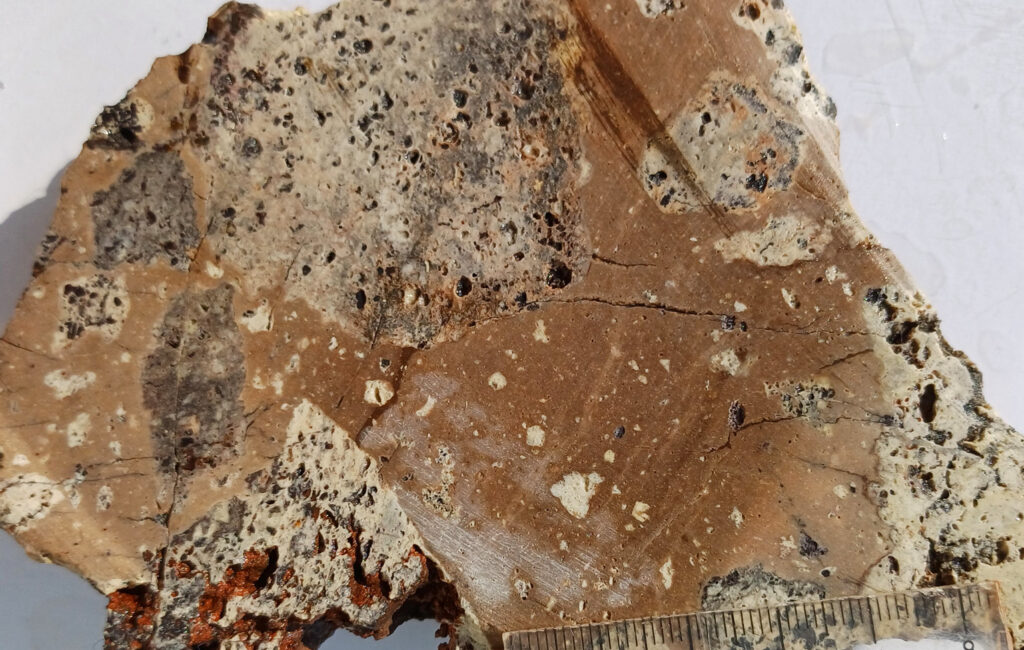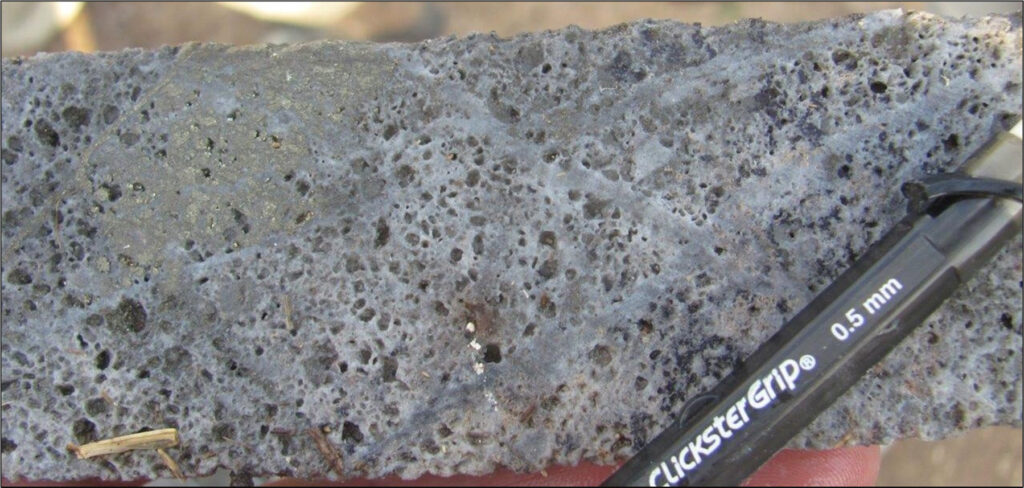The atlas has been updated with images from the Onto Deposit in Indonesia courtesy of David Burrows. The Onto deposit currently has an indicated resource of 0.76 billion tonnes (Gt) at 0.93% Cu, 0.56 g/t Au, 5 g/t Ag, and 350 ppm As (7 Mt contained Cu, 13 Moz Au) and an inferred resource of 0.96 Gt at 0.87% Cu, 0.44 g/t Au, 3 g/t Ag and 350 ppm As (8.3 Mt contained Cu, 14 Moz Au). In addition to these resources, an exploration target of 0.6 to 1.7 Gt at 0.4 to 0.7% Cu and 0.2 to 0.3 g/t Au has been delineated in a sur- rounding envelope based on drilling at approximately 200 × 200- to 400 × 400-m centers. Also recent samples are included from the Khvav Project in Cambodia.


Vuggy silica textures are formed by the dissolution of phenocrysts and entire clasts by hot and strongly acidic fluids that are generated during the cooling and crystallization of near surface intrusive bodies. Vuggy silica is often mineralized but is also a strong indicator of a very active hydrothermal system and epithermal Cu-Au-Ag and porphyry Cu-Au deposits at depth.
Please participate and contribute your photographs!
The interaction with ground water creates strong acids which dissolve the surrounding rock, leaving behind a sponge-like formation of porous vuggy silica. Gold and copper-rich brines can then precipitate their metals within the permeable silica bodies. The shape of the deposits is determined by the distribution of silica, which can be widespread if the acids interact with a permeable rock unit like a volcanic breccia or tuff. If the host rocks have low natural permeability then the deposits may be restricted to or close to the structure providing access for fluids from depth.
The acidic fluids are progressively neutralized (buffered) by the host rock. The rocks in turn are altered by the fluids into progressively more stable minerals the further away from the fault. As a result, definable zones of alteration minerals. Typically the sequence is to move from vuggy silica close to the main structure progressing through quartz-alunite to kaolinite-dickite, to illite and to chlorite rich rock. Alunite, kaolinite, dickite and illite are generally whitish to yellowish in color. The clay and sulphate alteration can cover hundreds of square kilometres.
We have compiled a collection of images of vuggy silica from high-sulphidation deposits around the world. These images are not well attributed and we will seek to redress this with your help. If you would like to contribute to this compendium with images from your deposits we would be most happy to provide full attribution and your co-operation will be greatly appreciated by your geoscience colleagues.
Great for teaching…thanks
Thanks for sharing… Good compendium to learn…
Gracias por compartir esta información tan importante y muy bien ilustrados los ejemplos.
What an excellent resource! Thank you.
Very interesting, thank you
Thanks for this excellent initiative John!
Really appreciated. The most important thing is that we can still contribute to make it bigger. Congrats!!
Geoporn at its best
Gracias, por compartir esta información de muy utilidad para exploradores…..
Fabulous compilation John! Much appreciated!
Dear John,
Where can I purchase/obtain a copy of this atlas?
Thank you, Don Birak
You are free to download it from the site. I am always looking for contributions!